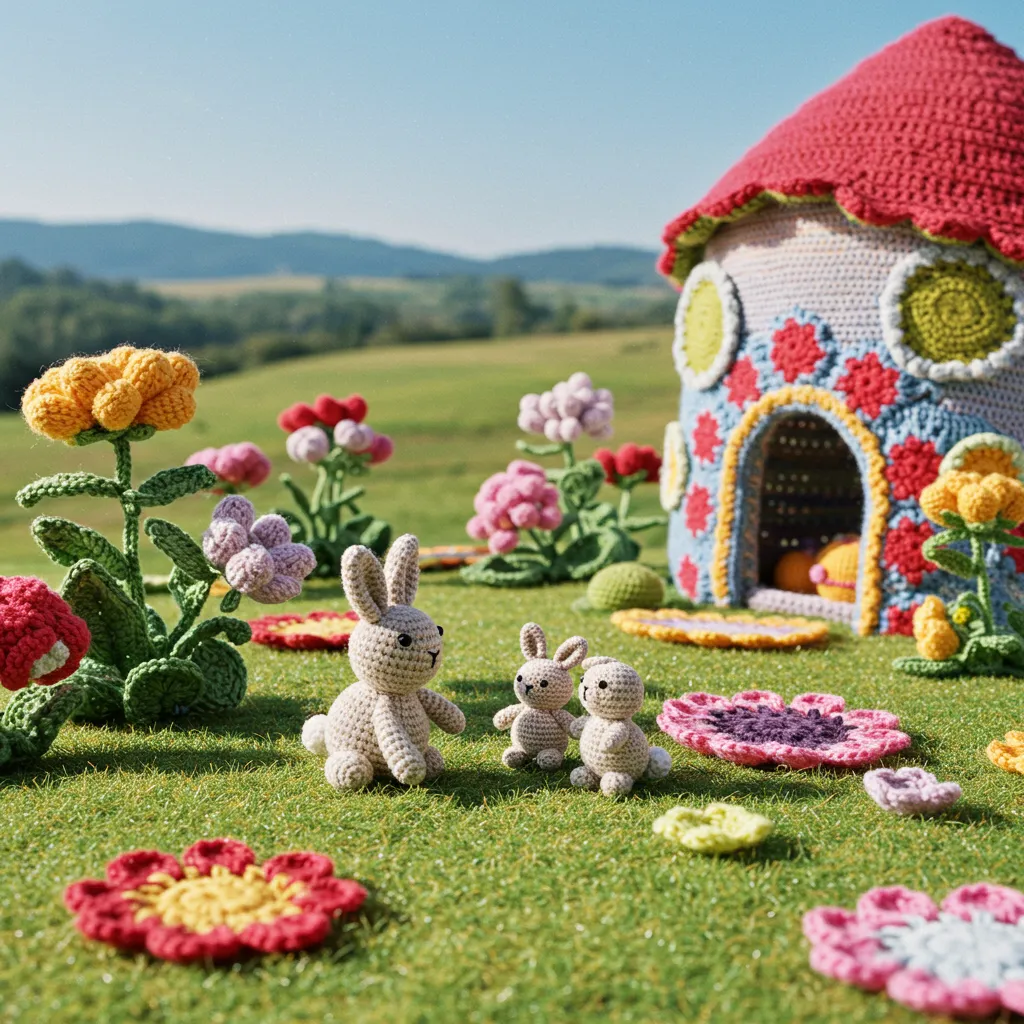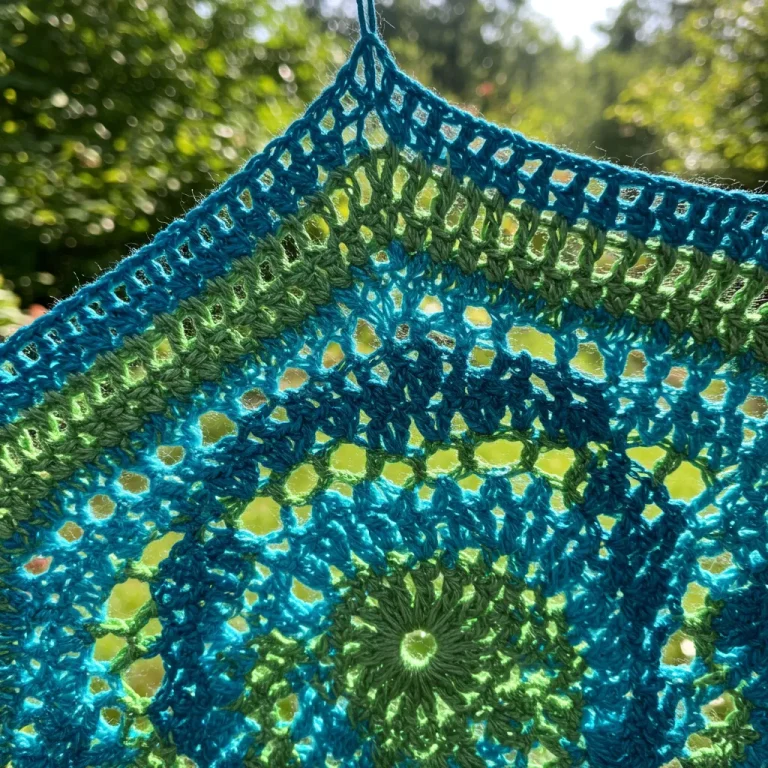The 1970s was a decade of radical change in fashion, music, and culture. As the world saw the rise of the counterculture movement, there was a significant shift toward self-expression, individuality, and a desire for all things handmade. One craft that saw a massive resurgence during this time was crochet. What had once been an old-fashioned pastime suddenly became the epitome of bohemian cool, with crocheted garments, accessories, and home decor exploding in popularity. The crochet craze of the 1970s not only influenced fashion but also played a pivotal role in the larger cultural landscape of the era. But how did crochet go from a traditional craft to a defining trend of the ’70s? Let’s take a deeper dive into this colorful chapter in crochet history.
The Bohemian Influence: Crochet as an Expression of Freedom
The crochet craze of the 1970s was closely tied to the growing bohemian lifestyle, which embraced freedom, creativity, and a rejection of mainstream norms. As the youth counterculture movement gained momentum, young people sought ways to express their individuality and break away from the conventional standards of fashion. The “hippie” movement, with its emphasis on peace, love, and non-materialism, celebrated the handmade and the organic. Crochet, with its tactile, labor-intensive nature and connection to older, traditional crafting methods, fit perfectly into this ethos.
This period saw an embrace of earthy tones, flowing garments, and natural fibers, which mirrored the environmental consciousness of the time. Many people turned to crochet not just as a form of artistic expression, but as a way to make their own clothes, defying the fast-paced, mass-produced fashion industry. The DIY spirit of crochet aligned with the growing interest in self-sufficiency, sustainability, and a return to simpler, handmade goods.
Crochet Takes Over Fashion: From Sweaters to Shawls
One of the most iconic aspects of the crochet trend in the 1970s was its significant presence in fashion. Crochet was no longer just reserved for tablecloths and doilies; it was front and center on the fashion scene, worn by both celebrities and everyday people. Crochet tops, dresses, vests, and even bikinis became fashionable staples of the era.
The crochet top, often worn over a tank top or swimsuit, became a particularly hot item during the 1970s. These loose, airy, often see-through garments were associated with the laid-back, free-spirited vibe of the time. The boho-chic look was all about layering, and crochet pieces were perfect for this style, as they allowed for easy mixing and matching with other garments. Crochet was not just for grandmothers—it was the ultimate expression of youthful rebellion and creativity.
Crochet also made its way into formal wear, with designers beginning to incorporate crochet into high-fashion collections. The popularity of crochet in fashion during this time was heavily influenced by the hippie and bohemian cultures, where individuality and non-conformity were key. The crochet dress, with its intricate patterns and cozy yet chic feel, became a symbol of the era’s carefree attitude.
Perhaps one of the most iconic crochet pieces of the decade was the crochet bikini. Worn by beachgoers and fashionable trendsetters alike, crochet bikinis captured the essence of 1970s summer style: sun-kissed skin, natural materials, and a laid-back, nonchalant coolness. Celebrities like Farrah Fawcett and Kate Hudson sported crochet bikinis, cementing the craft’s place in pop culture.
Crochet and Home Decor: The Cozy, Handmade Touch
While crochet’s impact on fashion is undeniable, the 1970s also saw the craft making its way into home decor. As the hippie movement promoted the idea of creating personal, inviting, and handmade spaces, crochet became a go-to method for adding warmth and texture to the home. Many people took up crochet to create everything from cozy afghans to wall hangings, pillows, and table runners.
Crochet blankets, especially granny squares, became a staple in living rooms and bedrooms during the decade. The modular design of granny squares allowed people to experiment with colors and create personalized, eclectic pieces that could be mixed and matched with various interior styles. These blankets were perfect for the cozy, laid-back feel of the ’70s home.
Additionally, macramé, a technique often used alongside crochet, emerged as a significant part of home decor during this period. Macramé plant hangers, wall hangings, and even furniture covers became synonymous with the boho aesthetic, enhancing the homemade, earthy vibe that was so prevalent in the ’70s.
Celebrities and Crochet’s Popularity
As with many trends in fashion, the 1970s crochet craze was greatly fueled by celebrity influence. High-profile figures, particularly in the entertainment world, helped bring crochet into the mainstream. Stars like Cher, Joni Mitchell, and Stevie Nicks wore crochet on stage and in their personal lives, associating the craft with rock ‘n’ roll glamour, bohemian chic, and effortless cool.
Cher, in particular, became known for her boho style, often wearing crochet garments paired with her signature flowing hairstyles. Her influence on the crochet craze cannot be overstated. She embraced the DIY spirit, frequently seen in crocheted garments and accessories that expressed her unique, personal style. The images of Cher in crocheted pieces, often juxtaposed with denim and fringe, became iconic of the 1970s aesthetic.
Joni Mitchell, a leading figure in folk music and counterculture, also helped popularize the crochet look. Known for her folk-inspired, nature-driven lyrics, Mitchell’s personal style—often featuring crochet shawls and tops—resonated with fans who embraced her ethos of simplicity and creativity.
Crochet in Craft Magazines and Books
With the growing popularity of crochet, craft magazines and books dedicated to the art flourished during the 1970s. Publications like Better Homes & Gardens, Family Circle, and Woman’s Day began to include crochet patterns for everything from fashion items like ponchos to home decor projects like crochet rugs and afghans. These publications provided clear, accessible instructions that helped more people learn how to crochet and incorporated it into their own lives.
Crochet pattern books also became widely popular, with authors like Mary Thomas and other crochet designers publishing volumes that offered a range of projects for beginners and experts alike. The availability of these resources fueled the crochet boom and made the craft more accessible than ever before.
The Lasting Legacy of the Crochet Craze
The crochet craze of the 1970s may have been driven by the fashion and cultural movements of the time, but it left a lasting impact that can still be felt today. Many of the iconic crochet designs of the ’70s—like the granny square blanket, crochet tops, and beach-ready bikinis—continue to be popular choices for contemporary crafters and fashion designers.
In the decades since, crochet has come in and out of fashion, but its enduring legacy is unmistakable. Today, crochet is experiencing a revival, particularly with the rise of slow fashion and a renewed interest in sustainable, handmade garments. The influence of the 1970s crochet boom is clear in the modern crochet designs that embrace the same sense of creativity, individuality, and nonconformity that defined the counterculture movement.
Conclusion: Crochet as a Symbol of the ’70s Spirit
The crochet craze of the 1970s was more than just a fleeting fashion trend—it was a reflection of the era’s values, aesthetics, and desire for self-expression. Crochet became a symbol of the DIY ethos, the bohemian lifestyle, and the growing demand for individuality and personal creativity. Through crochet, people were able to take control of their style and their environment, rejecting mass production and embracing handmade artistry.
Today, the crochet of the 1970s is remembered not just for its beauty, but for its role in shaping a cultural moment. Whether it’s a colorful granny square blanket or a crochet bikini, the spirit of the ’70s lives on in every stitch.




